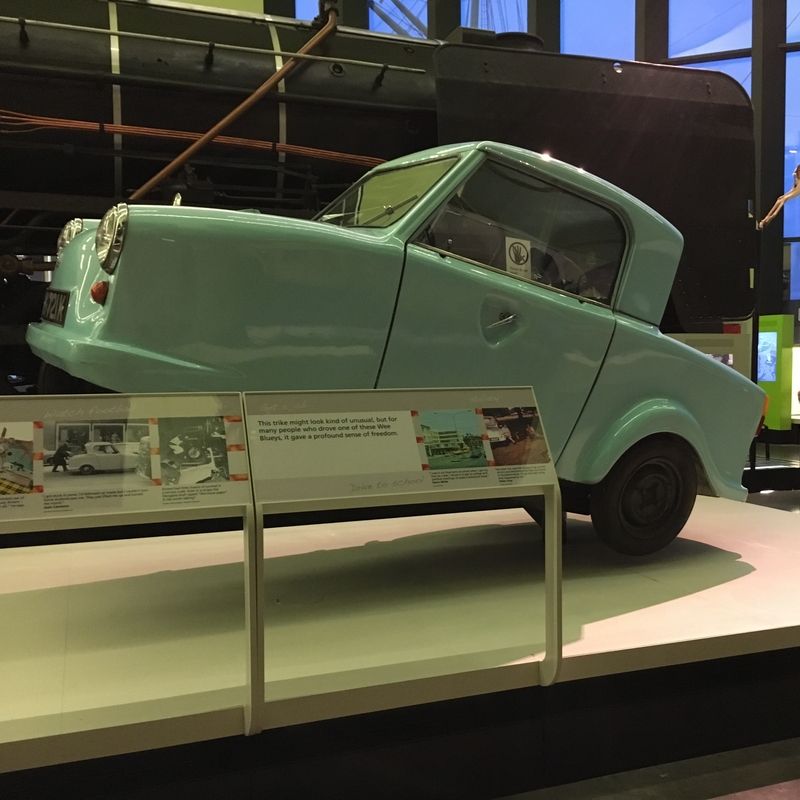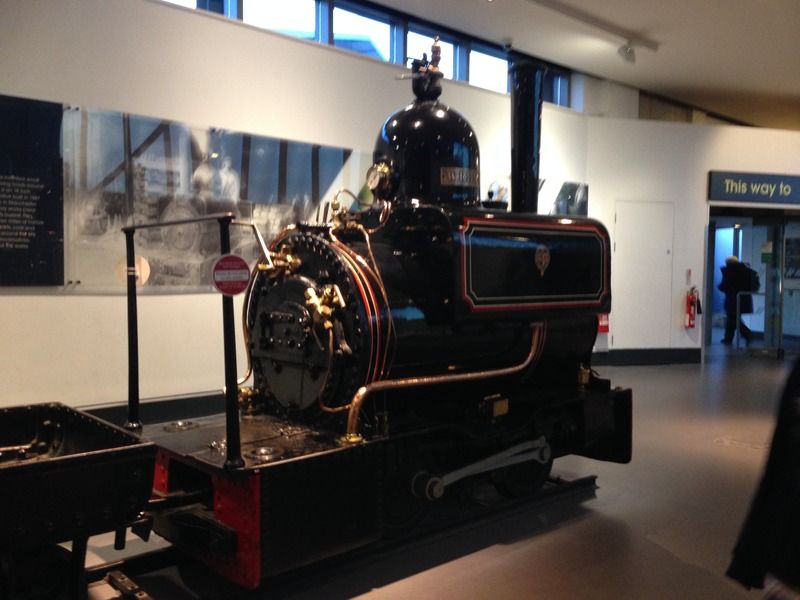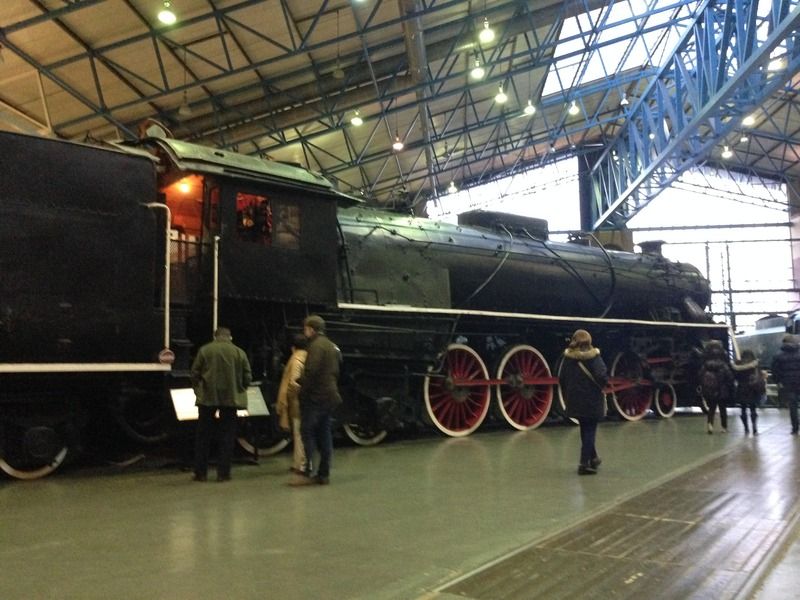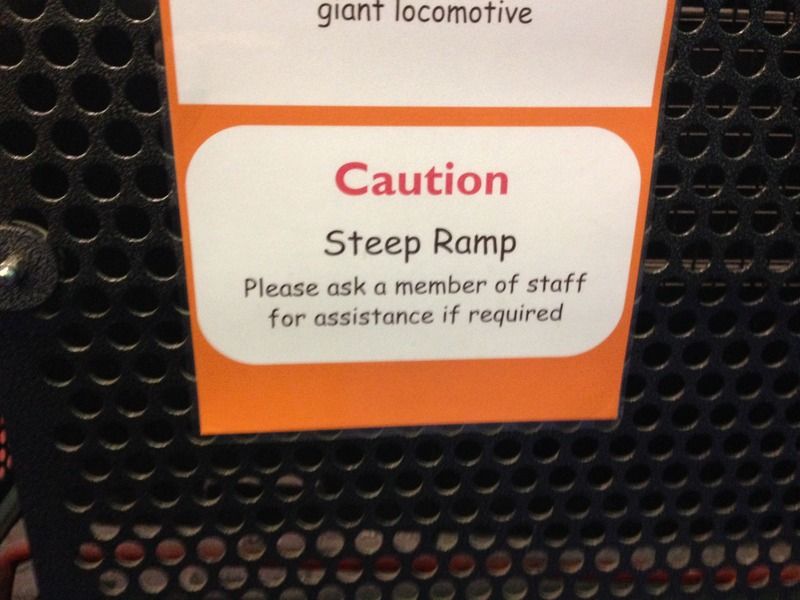One of the things about being the parent of a small boy is that you go to a lot of transport museums. The small Scottish boy's obsession with trains started when he was still a very small Black Country boy and he got his first Thomas the Tank Engine train set, which had a motorised Thomas. Then we moved to Bo'ness, home of the
Bo'ness and Kinneil Railway and the
Museum of Scottish Railways, where we spent many weekend days when he was smaller. Recently we've been to three transport-related museums, each of which was a different experience. The first two were on a weekend trip to the north of England with a friend in November.
First up was the big one.
The National Railway Museum at York. We've been a few times in the past but every visit is different. It's vast and includes trains from the
small to the
enormous.
The access is very good. The ramps are almost all gentle and there is even access up to some of the trains, including inside the bullet train and up to the side of the "Chinese Train" (actually made in the UK, but used in China). The latter's ramp has a sign warning of a steep slope, but I got up it with not much extra effort.
They'd also made the effort to create complete level access to the inside of the
Shinkansen (bullet train - the only one outside Japan) and it was even possible for me to get in there - and have a new pic of me for the blog taken.
My favourite part of the National Railway Museum is their storage sheds, which are open for the public to look around. Everything is in there. Model trains and ships, old signs, furniture, china, equipment, stonework from demolished stations. This time I spotted a couple of antique wheelchairs.
Next day we made a short visit to the Manchester
Museum of Science and Industry. This is based in a disused Victorian train station, but we didn't manage to see all of it, spending a lot of time looking at a
weaving demonstration and also eating lunch (excellent pizzas and the salad bar looked great too). The main engine sheds were closed for refurbishment. It's split across quite a large site and my only access gripe was that the accessible (tarmac) route across a large cobbled area was laid diagonally intersecting the train lines. This meant I had to zig zag my way up it to avoid getting my castors stuck between the rails (at York, they put pieces of wood in the gaps to prevent this being an issue).
Somehow I only managed to take two photos - Dougal from the Magic Roundabout on a plane and the Small Scottish Boy sitting in the planes and cars building.
The final visit was just before Christmas, when loose brakes on my wheelchair, meant we were through in Glasgow getting them adjusted (and an annual service for it). After lunch, given the choice of the
Riverside Museum,
Kelvingrove Museum and Art Gallery or the
People's Palace, the Small Scottish Boy predictably chose the one with the trains.
The Riverside is a relatively new museum in a purpose-built building so it's accessibility is good, aside from the huge paved area in front between the disabled parking and the entrance (which in Glasgow, in December, is not fun!) Our local hospital features the same huge empty space and I really think it's a problem for ambulant disabled people, especially in our climate. The museum crams a huge amount into a fairly small site, though, and everything inside is accessible and it's easy to see everything without getting tired. There's even cars and motorbikes on all the walls. Even the Tall Ship, parked on the Clyde behind the museum, has wheelchair access and a lift!


What impressed me on this visit was the increasing visibility of the disabled in the exhibits. I'd seen the small disabled trike-car (the predecessor of the Motability scheme) on a previous visit but this time noticed they have Glasgow's first disabled accessible taxi on display. It was first registered in 1988 - the same year as my first car!
The museum also has two streetscapes. A lengthy two sided street featuring shops from the turn of the 20th century to 1930 and a second from 1930 to 1980. I love these - there was one at the
Auckland War Memorial Museum that was my favourite thing as a child, sadly it was
removed just last year. The early 20th century street had replica flyers up in each window, marking the centenary of the
rent strikes organised by Mary Barbour to protest against steep rent increases while many men were serving during World War I. It was great to see so much social history being explored in a museum I suspect many parents are dragged along to by their train obsessed children. The streets at Riverside also feature the only two Glasgow Subway stations which I can get onto (Glasgow's single line, circular underground railway, with it's tiny trains, is
unlikely ever to be accessible).
The great thing at all these museums is that they're all free for everyone. I think it's great that so much is free here, both Glasgow and Edinburgh have a number of fantastic galleries and museusm and not having to pay to get in is a fantastic way of ensuring they're available to everyone. I always try to make a donation, since I can afford it, and we are members of the National Museums of Scotland but we more than get our moneys worth from them!













